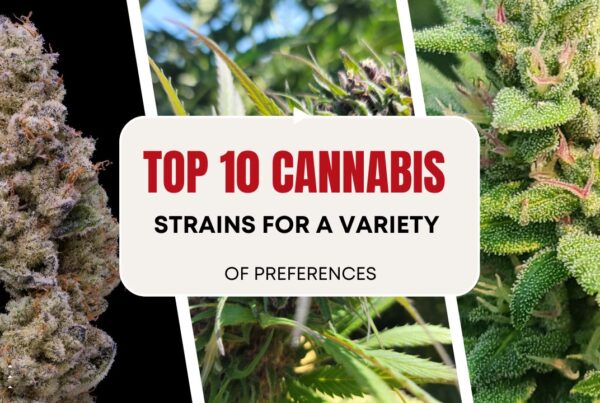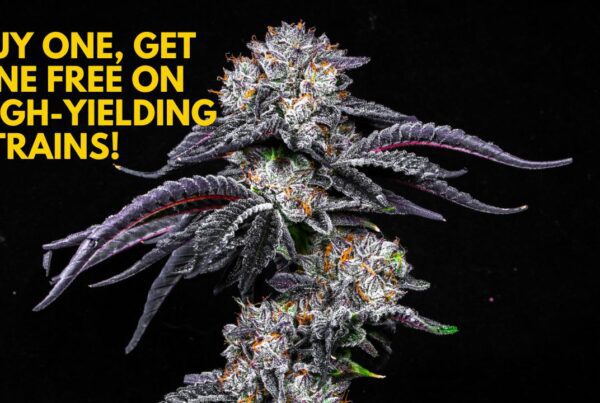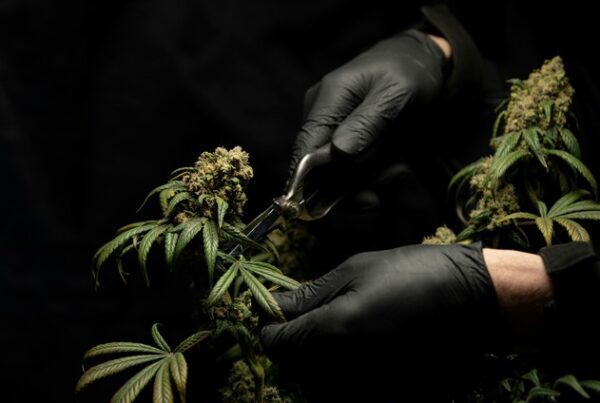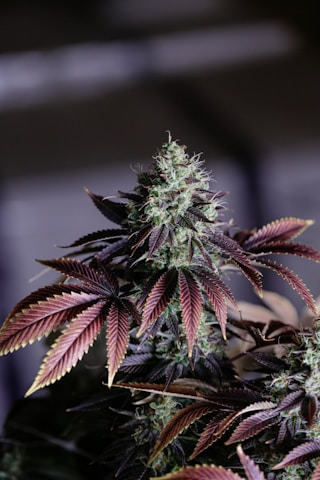Introduction

The Wombat strain is a delightful sensory experience, boasting a unique flavor profile and rewarding cultivation journey. Its distinct characteristics, ranging from its robust growth to its enticing aroma, make it a popular choice among cannabis enthusiasts. To ensure a successful cultivation experience, it is crucial to start with high-quality seeds from a reliable source, such as JG Seeds. In this guide, we’ll delve into the essential steps and considerations for growing the Wombat strain to its full potential.
Wombat Strain Cannabis Seed Description
Understanding the Wombat strain’s genetic background and characteristics is essential for a rewarding cultivation journey. In this section, we will explore the lineage, appearance, aroma, flavor profile, effects, and cannabinoid levels of this enticing cannabis strain.
Genetic Background and Lineage
The Wombat strain is a result of crossbreeding the legendary Original Haze with the potent Critical Mass. This unique combination gives Wombat its distinctive characteristics, making it a popular choice among cannabis enthusiasts. The strain’s Sativa-dominant genetic background contributes to its vigorous growth and delightful sensory experience.
Appearance, Aroma, and Flavor Profile
Wombat boasts an attractive appearance with dense, resinous buds covered in trichomes. The strain’s aroma is a delightful blend of sweet and earthy scents, reminiscent of its Haze lineage. Its flavor profile is equally enticing, offering a combination of sweet, fruity notes with subtle hints of Haze. The overall sensory experience of Wombat is both enjoyable and memorable, appealing to a wide range of cannabis connoisseurs.
Effects and Medical Benefits
As a Sativa-dominant hybrid, Wombat delivers uplifting and energizing effects that can boost mood and creativity. It is an excellent choice for daytime use and social gatherings, as it encourages a sense of happiness and mental clarity. Additionally, Wombat’s effects may offer relief from various medical conditions, such as chronic pain, stress, depression, and fatigue.
THC and CBD Levels
Wombat is known for its potent THC levels, which typically range between 18-22%. This potency contributes to the strain’s strong and long-lasting effects, making it a popular choice for experienced cannabis users. On the other hand, Wombat’s CBD levels are relatively low, usually falling below 1%. This cannabinoid profile is ideal for those seeking a powerful psychoactive experience without the balancing effects of CBD.
Environmental Requirements for Growing Wombat Strain
To ensure a successful and rewarding cultivation journey with the Wombat strain, it is crucial to provide the plants with the optimal environmental conditions. In this section, we will discuss the ideal temperature and humidity levels, the necessary sunlight or artificial light, and the considerations for indoor vs. outdoor cultivation.
Temperature and Humidity
Wombat strain plants thrive in a temperature range between 68-77°F (20-25°C). It is essential to maintain a consistent temperature within this range to promote healthy growth and prevent stress on the plants. Humidity levels should also be carefully monitored, with a general recommendation of 40-60% relative humidity during the vegetative phase and 35-45% during the flowering stage. Proper ventilation and air circulation can help regulate both temperature and humidity, ensuring a suitable environment for your Wombat strain plants.
Lighting Requirements
As a Sativa-dominant hybrid, the Wombat strain requires ample amounts of sunlight or artificial light to thrive. For outdoor cultivation, the plants should be exposed to direct sunlight for at least 8-10 hours per day. When growing Wombat strain indoors, using high-quality LED or HPS grow lights can provide the necessary spectrum and intensity of light for the plants to flourish. It is recommended to maintain an 18/6 light schedule during the vegetative phase and switch to a 12/12 schedule for the flowering stage.
Indoor vs. Outdoor Cultivation
The choice between indoor and outdoor cultivation depends on several factors, such as available space, local climate, and personal preferences. Growing Wombat strain indoors allows for greater control over environmental conditions, making it easier to maintain optimal temperature, humidity, and lighting. Indoor cultivation also enables year-round growing and multiple harvests, regardless of the season. On the other hand, outdoor cultivation can offer more abundant yields due to the natural sunlight and larger growing space. However, outdoor growers should consider potential risks, such as pests, diseases, and adverse weather conditions, when planning their Wombat strain cultivation journey.
Setting Up the Growing Space
To achieve a successful cultivation journey with the Wombat strain, it is crucial to set up an optimal growing space tailored to the plant’s needs. In this section, we will discuss the necessary equipment and tools for successful cultivation and share tips for creating the ideal growing environment.
Essential Equipment and Tools
Preparing your growing space with the right equipment and tools will ensure a thriving environment for your Wombat strain plants. Some of the essential items to consider include:
- High-quality grow lights (LED or HPS)
- Reflective materials or grow tents to maximize light exposure
- Temperature and humidity control systems (heaters, air conditioners, humidifiers, and dehumidifiers)
- Air circulation and ventilation equipment (fans and carbon filters)
- Grow medium and containers (soil, coco coir, hydroponic systems, pots, and fabric bags)
- Watering and nutrient feeding systems (automated or manual)
- Tools for training and support (trellises, stakes, and plant ties)
- Measuring and monitoring devices (thermometers, hygrometers, and pH meters)
Tips for Creating an Optimal Growing Environment
With the right equipment and tools in place, it’s time to optimize your growing space for the Wombat strain. Here are some tips to help you create the ideal environment:
- Ensure proper lighting coverage by positioning grow lights at the appropriate distance and angle from the plants. Adjust the height of the lights as the plants grow to maintain optimal intensity.
- Maintain a consistent temperature and humidity by closely monitoring environmental conditions and adjusting heating, cooling, and ventilation equipment as needed. Aim for the recommended temperature and humidity ranges discussed earlier in this guide.
- Provide adequate air circulation and ventilation to prevent mold and mildew growth, as well as to strengthen the plants’ stems. Utilize oscillating fans and exhaust systems to maintain fresh air exchange and regulate the environment.
- Choose a suitable grow medium and container size to accommodate the Wombat strain’s vigorous growth and root development. Ensure proper drainage and aeration for healthy root systems.
- Implement training techniques, such as super cropping, LST, SCROG, and SOG, to manage plant height and canopy while maximizing yield and light exposure.
- Regularly monitor and adjust the pH and nutrient levels of the grow medium or water to promote healthy growth and prevent nutrient deficiencies or imbalances.
By following these tips and equipping your growing space with the necessary tools, you will create an optimal environment for your Wombat strain plants to flourish, leading to a rewarding cultivation journey.
Propagation and Germination of Wombat Strain Seeds
Starting with healthy and viable seeds is crucial for a successful cultivation journey with the Wombat strain. In this section, we will provide a step-by-step guide to germinating Wombat strain seeds and share information about the expected germination time and success rate.
Step-by-Step Guide to Germinating Wombat Strain Seeds
- Begin by preparing a clean and sterile work area to prevent contamination of the seeds.
- Moisten a few paper towels or a piece of cloth with distilled water, ensuring they are damp but not soaking wet.
- Place the Wombat strain seeds onto the moistened paper towel or cloth, spacing them evenly to provide ample room for growth.
- Cover the seeds with another damp paper towel or cloth, creating a moist environment that promotes germination.
- Place the seeds in a dark, warm location with a consistent temperature between 68-77°F (20-25°C). A plastic bag or container can be used to maintain humidity and temperature.
- Check on the seeds daily, ensuring they remain moist and adjusting the environmental conditions as needed. If necessary, spray the paper towels or cloth with more distilled water to maintain the appropriate moisture level.
- After 3-7 days, the seeds should begin to germinate, and small taproots will emerge. Once the taproots have reached a length of approximately 0.5 inches (1.3 cm), they are ready to be transplanted into a suitable grow medium.
Expected Germination Time and Success Rate
When following the proper germination techniques, Wombat strain seeds typically germinate within 3-7 days. However, the germination time may vary depending on factors such as seed quality, environmental conditions, and individual seed genetics. The success rate for germinating Wombat strain seeds is generally high, especially when using fresh seeds from a reputable source like JG Seeds. By providing the optimal conditions for germination, you can increase the likelihood of a successful and rewarding cultivation journey with the Wombat strain.
Vegetative Phase of Wombat Strain
The vegetative phase is a crucial stage in the growth and development of Wombat strain plants. During this period, the plants focus on building strong roots, branches, and foliage, setting the foundation for a bountiful harvest later on. In this section, we will discuss the duration of the vegetative phase, share tips for promoting healthy growth and strong branches, and explore training techniques to manage plant height and canopy.
Duration of the Vegetative Phase
The vegetative phase of Wombat strain plants typically lasts between 4-6 weeks, depending on factors such as lighting conditions, grow medium, and the plants’ overall health. During this time, it is essential to provide the plants with adequate light, nutrients, and environmental conditions to promote vigorous growth and development.
Tips for Promoting Healthy Growth and Strong Branches
To ensure a successful cultivation journey with the Wombat strain, consider the following tips for promoting healthy growth and strong branches during the vegetative phase:
- Provide ample lighting, either from natural sunlight or high-quality grow lights, to encourage photosynthesis and robust growth.
- Maintain consistent temperature and humidity levels within the recommended ranges to prevent stress on the plants and promote optimal growth.
- Feed the plants with a balanced nutrient solution tailored to the vegetative phase, ensuring proper nutrient uptake and preventing deficiencies or imbalances.
- Prune and trim the plants regularly to encourage bushy growth, remove dead or damaged foliage, and improve light penetration and airflow within the canopy.
Training Techniques to Manage Plant Height and Canopy
Due to Wombat strain’s vigorous growth, it is essential to implement training techniques to manage plant height and maintain an even canopy. Some popular methods include:
- Super Cropping: This technique involves gently bending and pinching the stems to create small breaks in the plant tissue, encouraging the plant to heal and grow stronger branches.
- Low-Stress Training (LST): LST involves gently bending and securing the branches to create an even canopy and expose more of the plant to light, promoting increased bud development.
- Screen of Green (SCROG): This method involves using a horizontal screen or net to train the plants to grow horizontally, creating a flat and even canopy that maximizes light exposure and promotes higher yields.
- Sea of Green (SOG): SOG is a technique in which multiple plants are grown closely together, encouraging them to compete for light and grow vertically. This method can help manage plant height and increase yields in smaller growing spaces.
By implementing these training techniques and promoting healthy growth during the vegetative phase, you will set the stage for a rewarding cultivation journey with the Wombat strain.
Flowering Phase of Wombat Strain
The flowering phase is a critical stage in the Wombat strain cultivation journey, as it is during this time that the plants produce their valuable and potent buds. In this section, we will discuss the duration of the flowering phase, share tips for maximizing yield and potency, and explore the signs that the plants are ready for harvest.
Duration of the Flowering Phase
For the Wombat strain, the flowering phase generally lasts between 8-10 weeks. This duration may vary slightly depending on factors such as growing conditions, plant genetics, and environmental factors. It is essential to monitor the plants’ progress during this stage and provide them with the necessary care and attention to ensure a bountiful harvest.
Tips for Maximizing Yield and Potency
To achieve the best possible yield and potency in your Wombat strain plants, consider the following tips:
- Switch the light schedule to a 12/12 cycle (12 hours of light, followed by 12 hours of darkness) to trigger the flowering phase and encourage bud production.
- Ensure optimal lighting conditions by maintaining appropriate intensity and spectrum throughout the flowering phase, either through natural sunlight or high-quality grow lights.
- Feed the plants a nutrient solution specifically formulated for the flowering phase, focusing on phosphorus and potassium to promote bud development and potency.
- Monitor and maintain temperature and humidity levels within the recommended ranges to prevent stress on the plants and to support optimal growth and bud production.
- Implement gentle defoliation techniques to remove unnecessary foliage and improve light penetration and airflow within the canopy, promoting healthy bud development.
Signs that the Plants are Ready for Harvest
Identifying the right time to harvest your Wombat strain plants is crucial to ensuring maximum potency and yield. Look out for the following signs to determine when your plants are ready for harvest:
- The pistils, or hair-like structures on the buds, change color from white to orange or brown, indicating maturity.
- The trichomes, or resin glands on the buds, change from a clear to a cloudy or amber color, signaling peak cannabinoid production.
- The overall appearance and aroma of the buds become more pronounced, reflecting the unique flavor profile and sensory experience of the Wombat strain.
By closely monitoring your Wombat strain plants during the flowering phase, implementing the tips provided, and harvesting at the optimal time, you can expect a delightful and rewarding cultivation journey with this enticing cannabis strain.
Cannabis Fertilization and Nutrition for Wombat Strain
Providing the Wombat strain with the proper fertilization and nutrition is essential for healthy growth and development throughout its life cycle. In this section, we will discuss the nutrient requirements during different stages of growth, share tips for feeding and watering the plants, and explore common nutrient deficiencies and how to address them.
Nutrient Requirements During Different Stages of Growth
Wombat strain plants, like all cannabis plants, require specific nutrients during different stages of growth. During the vegetative phase, the plants need higher levels of nitrogen to support the development of foliage and overall growth. As the plants transition into the flowering phase, they require an increased intake of phosphorus and potassium to promote bud development and potent resin production. It is essential to use a balanced and stage-specific nutrient solution to meet the changing needs of your Wombat strain plants.
Tips for Feeding and Watering the Plants
Proper feeding and watering are crucial for the health and well-being of your Wombat strain plants. Consider the following tips to ensure optimal nutrient uptake and hydration:
- Use a high-quality nutrient solution formulated specifically for cannabis plants, following the manufacturer’s instructions for mixing and application.
- Monitor the pH levels of your grow medium or water to maintain a range of 6.0-7.0 for soil and 5.5-6.5 for hydroponic systems, allowing for optimal nutrient absorption.
- Water the plants regularly, ensuring the grow medium remains moist but not overly saturated. Overwatering can lead to root rot and other issues, while underwatering may cause dehydration and nutrient deficiencies.
- Adjust your feeding and watering schedule based on the plants’ stage of growth, environmental conditions, and individual needs. Be attentive to signs of nutrient deficiencies or imbalances, and make the necessary adjustments to keep your plants healthy and thriving.
Common Nutrient Deficiencies and How to Address Them
Wombat strain plants may experience nutrient deficiencies or imbalances during their growth cycle. Some common issues and their solutions include:
- Nitrogen Deficiency: Yellowing leaves, especially on older growth, may indicate a lack of nitrogen. Increase the nitrogen levels in your nutrient solution or switch to a more nitrogen-rich formula.
- Phosphorus Deficiency: Dark purple or red stems and leaves, along with slow or stunted growth, may signal a phosphorus deficiency. Increase phosphorus levels in your nutrient solution or use a bloom booster to promote bud development.
- Potassium Deficiency: Curling or yellowing leaf edges, along with weak stems and slow growth, may be signs of a potassium deficiency. Increase potassium levels in your nutrient solution or use a product specifically designed to address this issue.
By closely monitoring your Wombat strain plants’ nutrient requirements, feeding and watering practices, and addressing any deficiencies or imbalances, you can ensure a delightful and rewarding cultivation journey.
Pest and Disease Control for Wombat Strain
Protecting your Wombat strain plants from pests and diseases is crucial for a successful cultivation journey. In this section, we will discuss common pests and diseases affecting Wombat strain plants and share prevention and treatment methods to ensure the health and well-being of your plants.
Common Pests and Diseases Affecting Wombat Strain Plants
Various pests and diseases can pose a threat to the health and yield of your Wombat strain plants. Some of the most common issues include:
- Spider mites: These tiny arachnids can damage your plants by feeding on their leaves and sap, causing yellowing and wilting. In severe cases, they may even lead to plant death.
- Aphids: These small insects can cause significant damage to your plants by sucking the sap from leaves and stems, potentially spreading diseases and leading to stunted growth.
- Whiteflies: These pests can weaken your plants by feeding on their sap, as well as transmitting diseases that may further harm your plants.
- Gray mold (Botrytis): This fungus can cause significant damage to your plants’ buds and leaves, leading to rot and eventual plant death if left untreated.
- Powdery mildew: This fungal disease can cause white, powdery spots on your plants’ leaves and stems, leading to reduced photosynthesis, stunted growth, and bud damage.
Prevention and Treatment Methods
Implementing effective pest and disease control measures can help you maintain healthy and thriving Wombat strain plants. Consider the following prevention and treatment methods:
- Regular inspections: Check your plants frequently for signs of pests and diseases, catching issues early before they become more severe.
- Maintain a clean and sanitary grow environment: Keeping your growing space clean and clutter-free can help prevent the spread of pests and diseases. Dispose of dead or diseased plant material promptly and sanitize your tools and equipment regularly.
- Proper ventilation and air circulation: Ensuring adequate airflow in your growing space can help prevent the growth of mold and mildew, as well as discourage pests from taking up residence in your plants.
- Biological controls: Introduce beneficial insects, such as ladybugs and predatory mites, to help control pests naturally and maintain a balanced ecosystem within your growing space.
- Organic and chemical treatments: If pests or diseases persist, consider using organic or chemical treatments specifically designed for cannabis plants. Always follow the manufacturer’s instructions and test a small area before applying to your entire crop.
By proactively addressing pests and diseases and implementing effective prevention and treatment methods, you can ensure a delightful and rewarding cultivation journey with the Wombat strain.
Harvesting and Curing Wombat Strain
Harvesting and curing your Wombat strain plants are essential steps in the cultivation process, as they directly impact the flavor, aroma, and potency of your final product. In this section, we will discuss when and how to harvest Wombat strain plants and share proper drying and curing techniques to preserve their delightful sensory experience and unique flavor profile.
When and How to Harvest Wombat Strain Plants
To determine the optimal time to harvest your Wombat strain plants, pay close attention to the signs of maturity discussed in the previous section, such as the color changes in the pistils and trichomes. Once your plants have reached their peak maturity, it’s time to harvest. Follow these steps to harvest your Wombat strain plants:
- Prepare a clean and sanitary work area with the necessary tools, such as sharp scissors, gloves, and trays or containers for holding the harvested buds.
- Begin by removing the larger fan leaves from your plants, as these do not contain significant amounts of cannabinoids and can be discarded.
- Carefully trim the buds from the branches, ensuring not to damage the delicate trichomes that house the plant’s cannabinoids and terpenes.
- Trim away any remaining sugar leaves, which are the smaller leaves surrounding the buds, as these can be saved for use in making concentrates or edibles.
- Place your trimmed buds into trays or containers, ensuring they are not overcrowded and have ample space for airflow during the drying process.
Proper Drying and Curing Techniques to Preserve Flavor and Potency
Drying and curing your harvested Wombat strain buds are critical for enhancing their flavor, aroma, and potency, as well as for preventing mold and mildew growth. Follow these steps to properly dry and cure your buds:
- Hang your trimmed buds in a dark, well-ventilated area with a consistent temperature between 60-70°F (15-21°C) and a relative humidity of 45-55%. This environment will promote slow and even drying, which helps preserve the buds’ terpene profile and cannabinoid content.
- Allow the buds to dry for approximately 7-14 days, checking on them regularly to ensure they are not drying too quickly or developing mold. The drying process is complete when the buds feel slightly crispy on the outside, and the stems snap rather than bend when pressure is applied.
- Once the buds are adequately dried, transfer them to airtight containers, such as glass jars, for the curing process. Fill the jars about ¾ full, leaving some space for air circulation.
- Store the jars in a cool, dark location with a consistent temperature between 60-70°F (15-21°C) and a relative humidity of 55-62%. For the first week, open the jars for a few minutes each day to allow fresh air exchange and release any built-up moisture. This process, known as “burping,” helps prevent mold and mildew growth.
- Continue the curing process for 2-4 weeks, or longer for a smoother, more flavorful smoke. During this time, the buds will continue to develop their unique flavor profile and aroma, as well as increase in potency.
By following these harvesting and curing techniques, you can preserve the delightful sensory experience and unique flavor profile of your Wombat strain plants, ensuring a rewarding and enjoyable consumption experience.
Advantages and Disadvantages of Growing Wombat Strain
When considering the cultivation of Wombat strain cannabis plants, it is essential to weigh both the advantages and disadvantages associated with growing this particular strain. In this section, we will explore the pros and cons of cultivating Wombat strain and compare it with other popular strains to help you make an informed decision.
One significant advantage of growing Wombat strain is its vigorous growth and strong branches, making it a resilient choice for both novice and experienced growers. The robust growth characteristics of this strain also contribute to its rewarding cultivation journey, as it can produce high yields and dense colas in a relatively short amount of time. The delightful sensory experience offered by Wombat strain, with its unique flavor profile and enticing aroma, further adds to its appeal among cannabis enthusiasts.
On the other hand, the Wombat strain’s vigorous growth can also present some challenges, particularly when it comes to managing plant height and canopy. Growers may need to invest more time and effort in training techniques such as super cropping, LST, SCROG, and SOG to manage the plant’s size and maintain an even canopy. Additionally, the potent THC levels of Wombat strain may not be suitable for all users, especially those seeking a more balanced or CBD-rich cannabis experience.
When comparing Wombat strain to other popular strains, it is essential to consider factors such as growth characteristics, yield potential, and sensory experience. While some strains may offer a more balanced cannabinoid profile or a more manageable growth habit, the Wombat strain’s unique combination of vigorous growth, high yields, and delightful sensory experience make it a compelling choice for many cannabis growers.
In conclusion, the advantages and disadvantages of growing Wombat strain must be considered based on individual preferences and growing conditions. By carefully evaluating the pros and cons, as well as comparing the strain with other popular options, you can make an informed decision and embark on a rewarding cultivation journey with the Wombat strain or a strain that better suits your needs.
Conclusion
In this comprehensive guide, we have covered the key aspects of growing the Wombat strain, from understanding its unique characteristics and environmental requirements to mastering the various stages of its growth cycle. We also delved into the importance of proper fertilization, nutrition, and pest and disease control, as well as the crucial steps for harvesting and curing to ensure a delightful sensory experience.
With the knowledge and insights gained from this guide, you are now equipped to embark on a rewarding cultivation journey with Wombat strain seeds. Embrace the challenge of growing this enticing cannabis strain and reap the benefits of its robust growth, unique flavor profile, and enjoyable effects. Happy growing!
Embark on Your Growing Journey
We hope this comprehensive guide has provided you with the knowledge and insights needed for a rewarding cultivation journey with Wombat strain. As you embark on this adventure, remember to explore JG Seeds’ wide range of premium cannabis seeds, including Wombat strain and other popular strains. Visit JG Seeds for easy access to product pages and additional information on their high-quality seeds, ensuring a successful and satisfying growing experience.










